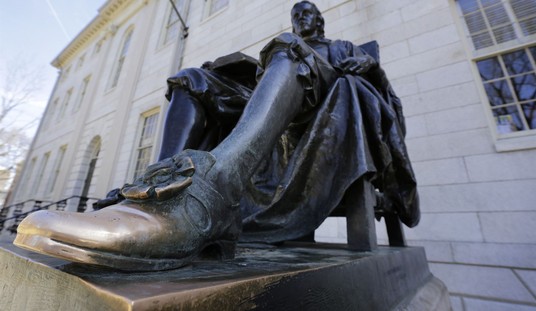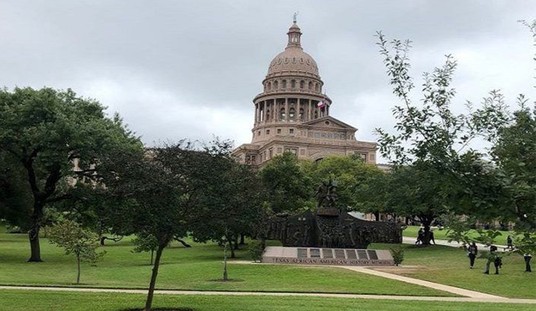It seems harmless enough when an airline offers their customers “green indulgences” in the form of carbon credits when buying a ticket. The credits are intended to resolve the guilt the customer is supposed to feel for his wanton use of fossil fuels. In practice, the credits have become a perverse incentive for practices that are exactly opposite what the U.N. intended when it created the system.
It works like this: carbon credits can be traded for cash. You earn one credit for destroying or sequestering a ton of carbon dioxide (CO2). Some other gases have stronger greenhouse effect than CO2, and so are worth more in carbon credits. A ton of methane counts for 21 tons of CO2, nitrous oxide 310. It’s a huge market.
Buyers of the credits include power plants that need to offset emissions that exceed European limits, countries buying offsets to comply with the Kyoto Protocol — an international environmental treaty — and some environmentally conscious companies that voluntarily offset their carbon footprint.
A gas called HFC-23 is worth 11,700 credits. It is a waste byproduct of the manufacture of HCFC-22, the world’s most common refrigerant. Manufacturers get lots of credits for making HCFC-22 and destroying the HFC-23 rather than venting it directly to the atmosphere.
HCFC-22 is considered ozone-depleting; its use is being phased out in developed countries but it is still manufactured in 19 plants worldwide, 16 of those in India and China. It didn’t take a Harvard MBA for plant managers to figure out that the more HCFC-22 they make, the more money they make from HFC-23 credits. Some of them make 50% of their profit from selling HFC-23 credits. Furthermore, according to a graphic accompanying a recent article in the New York Times, 40% of the U.N.’s total carbon abatement credits are attributable to HFC-23. (Link requires registration.)
The plants in India and China in particular have cranked up the production of HCFC-22, which is a concern for the environmentalists in itself:
The high output keeps the prices of the coolant gas irresistibly low, discouraging air-conditioning companies from switching to less-damaging alternative gases. That means, critics say, that United Nations subsidies intended to improve the environment are instead creating their own damage. …
The plants also used inefficient manufacturing processes to generate as much waste gas as possible, said Samuel LaBudde of the Environmental Investigation Agency, an organization based in Washington that has long spearheaded a campaign against what he called “an incredibly perverse subsidy.”
A-hem.
Further,
Disgusted with the payments, the European Union has announced that as of next year it will no longer accept the so-called waste gas credits from companies in its carbon trading system — by far the largest in the world — essentially declaring them counterfeit currency. That is expected to erode their value, but no one is sure by how much.
But the manufacturers hold the upper hand. Now that they’re geared up to produce HCFC-22 in large quantities, if they can’t sell the HFC-23 credits, they’ll just vent the offending gas into the atmosphere.
“I was a climate negotiator, and no one had this in mind,” said David Doniger of the Natural Resources Defense Council. “It turns out you get nearly 100 times more from credits than it costs to do it. It turned the economics of the business on its head.”
It should come as no surprise that people do exactly what you give them an incentive to do. The moral is, be careful in how you structure your incentives. Bureaucrats will never be able to design a system that can’t be gamed by a clever, profit-motivated individual. Or, as Moe Lane eloquently put it, “…if you attempt to set up a market without having the first [expletive deleted] clue about how capitalism works on a practical level, that market will be manipulated by people who do have a [expletive deleted] clue about how capitalism works on a practical level.”
One last observation: This half-baked attempt to fool the markets is largely an outgrowth of the Kyoto Protocols. Green activists and Democrat politicians have been bemoaning the U.S. Senate’s refusal to ratify Kyoto since 1997. The protocol’s provisions took effect in 2005:
[Wikipedia]: As of September 2011, 191 states have signed and ratified the protocol. The only remaining signatory not to have ratified the protocol is the United States. Other United Nations member states which did not ratify the protocol are Afghanistan, Andorra and South Sudan. In December 2011, Canada renounced the Protocol.
Can you imagine how much worse the problem would be if the U.S. were a signatory?
[Updated to correctly identify the refrigerant gas as HCFC-22, per commenter wlcjr, below. – Ed.]














Join the conversation as a VIP Member